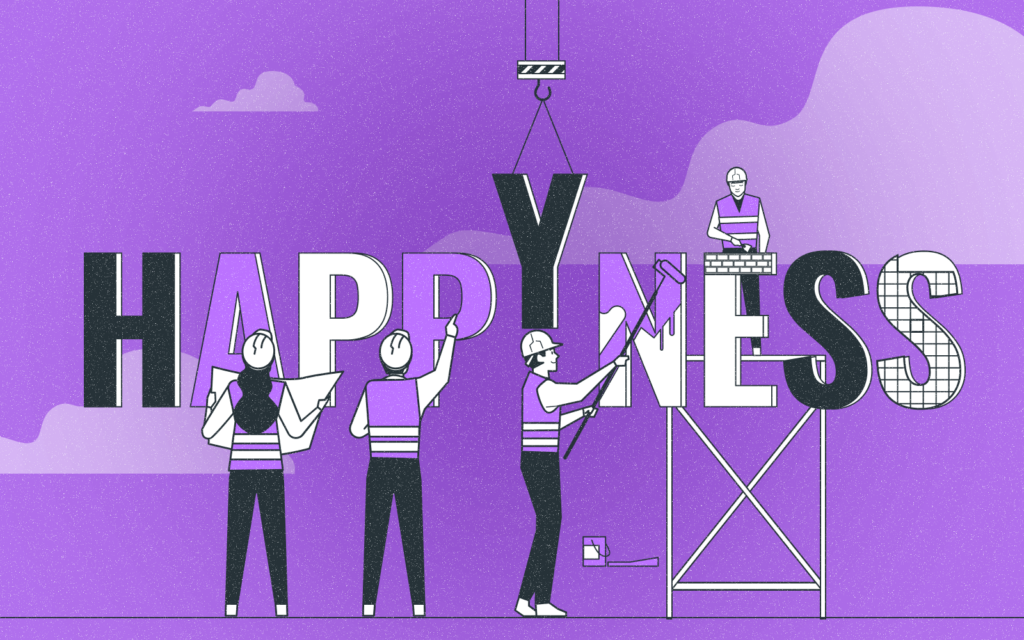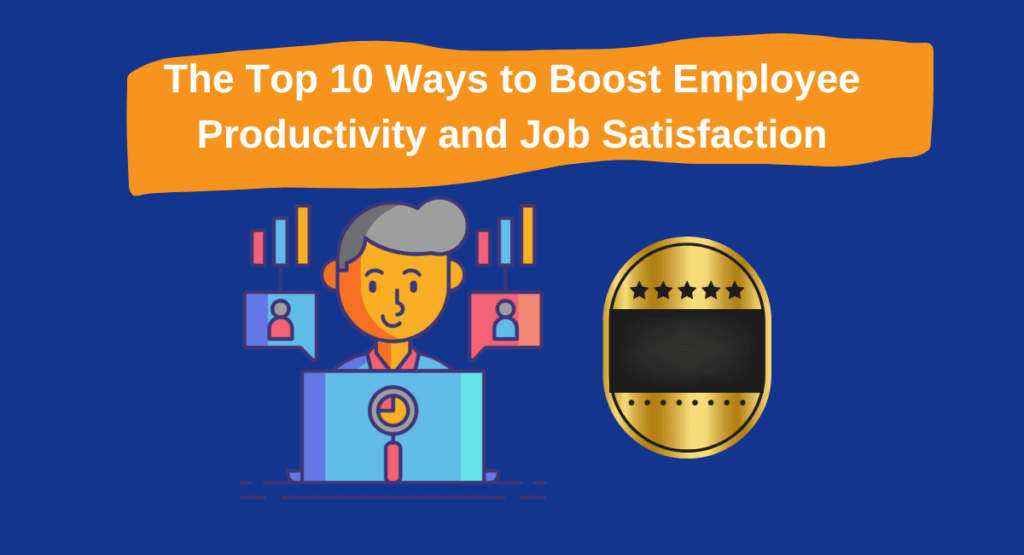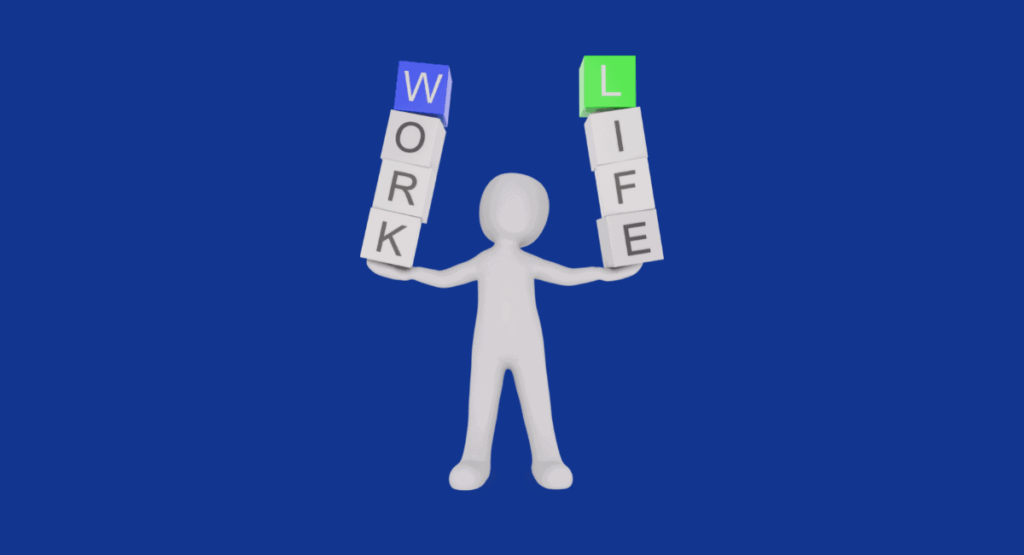Employee Productivity and Job Satisfaction


Most business owners want their employees to be productive and happy.
Productive employees are essential to any company, but employees who are satisfied with their jobs are just as important.
This blog post will inform ten ways to boost employee productivity and job satisfaction. Follow the ten ways, and you can rest assured that your employees will be happier and more productive!
Get more out of your business
Get the best employee engagement content every week via mailing list
Employee productivity definition
“Training & development help companies gain and retain top talent, increase job satisfaction and morale, improve productivity and earn more profit.” Q-Sourcing.
Employee productivity is how much work an employee does in a specific time. Several factors can affect productivity, including the quality of tools and resources, the clarity of instructions, and the working environment.
Identifying and addressing any factors hindering workers from completing their tasks is essential. You can improve the employees’ productivity when you can identify the factors.
Additionally, managers can provide employees with regular feedback and offer incentives for meeting or exceeding productivity goals. By taking steps to increase employee productivity, businesses can improve their bottom line and better compete in today’s marketplace.
Why is employee productivity important?
There are many good reasons why increasing employee productivity is important. For one thing, it can lead to increased profits for businesses. More productive employees can get more work done in less time, which means companies can save on labor costs.
In addition, increased productivity can also lead to improved quality of work. When employees have the time and resources to do a better job, the quality of their work will increase.
Finally, increased productivity can also lead to higher levels of customer satisfaction.
When businesses provide their customers with faster, better service, they are more likely to be satisfied with the overall experience. Companies that do so will likely see positive results in many areas.
What is Job Satisfaction?

Job satisfaction is the feeling of being content with your job. It is often measured by how happy employees are with their work, how engaged they feel, and how proud they are of their organization.
Several factors can affect an employee’s job satisfaction, including the nature of the work itself, the company culture, and the compensation and benefits package.
Job satisfaction is essential not only for individual employees but also for organizations as a whole.
Satisfied employees are more productive, engage in less absenteeism, and are more likely to stay with an organization over the long term. As such, promoting job satisfaction should be a priority for any employer.
Ten best practices for boosting employee productivity and job satisfaction
The best way to boost employee productivity and job satisfaction is to create an environment where employees feel appreciated and respected.
Here are the ten best practices for boosting employee productivity and job satisfaction:
1. Encourage employee input and feedback
Employees have the same opportunities to express ideas or opinions to improve business operations.
Encourage employee input by soliciting feedback on company policies, procedures, and processes.
2. Ensure employees have the resources they need
Employers ensure that all employees have the necessary tools and resources to do their jobs. Ensure employees understand how to use the latest technology for the business.
3. Encourage employee development
Employees should feel like they are growing and developing in their roles. Offer opportunities for employee training and development, and encourage employees to take advantage of them.
4. Create a positive work environment
A positive work environment is one where employees feel comfortable and respected. Promote a culture of respect and cooperation, and make sure everyone feels like they belong.
5. Encourage open communication
Open communication is essential for boosting employee productivity and job satisfaction. Encourage employees to share ideas, concerns, and suggestions with management.
6. Ensure employees are aware of company goals
Employees who understand the business’s goals and how their work fits into those goals will be more productive. Ensure employees understand the company’s goals and objectives and keep them updated on progress.
7. Recognize and reward employee achievements
Employees who believe they are valued at work are more satisfied with their jobs. Recognize and reward employee achievements, both big and small.
8. Provide opportunities for employee growth
Employees should feel like they have room to grow in their roles. Offer opportunities for employee advancement, and encourage employees to pursue them.
9. Encourage work/life balance

A healthy work/life balance is essential for boosting employee productivity and job satisfaction. Encourage employees to take advantage of flexible work arrangements and make time for family and personal pursuits.
10. Make employee health and well-being a priority.
Employees in good health and who feel good about their work are more productive and satisfied with their jobs. Make employee health and well-being a priority by offering wellness programs, flexible work arrangements, and other perks.
Remote workforce productivity
A company can save money by having a remote workforce by not having to pay for office space and other related costs. Additionally, This type of workforce can be more productive because traditional office work schedules and rules do not hinder them.
One of the critical factors in employee performance is communication. When working remotely, it’s essential to have clear and concise communication channels so everyone is on the same page.
You need to have a system to track the progress of your project and meet deadlines. Additionally, it’s essential to give employees the autonomy to manage their time and schedules. This can help to boost productivity by allowing employees to work when they are most productive.
A remote workforce can be highly effective with the right tools and processes.
Determining job satisfaction of remote team
Job satisfaction is a critical metric in human resource management, as it helps to determine employee engagement and motivation.
However, it can be challenging to measure job satisfaction for remote teams. One way to do this is to survey employees regularly, asking them questions about their work and how they feel about their job.
Another approach is to hold regular team meetings, during which employees can provide feedback on their work experiences. By taking these steps, managers can gain insights into the level of job satisfaction among their remote employees and take action to improve it.
Some common myths about employee productivity

There are many common myths about employee productivity. For example, some people believe that employers can measure productivity by the time spent working. However, this is not necessarily true. Employee productivity also depends on factors such as the quality of work, the ability to focus, and the task’s difficulty.
Some people believe that employers can improve productivity by working longer hours. A study from Standford University shows that employees who work long hours are less productive than those who work shorter hours.
Employees who work more hours are also less satisfied with their jobs. This is because they often feel overwhelmed and stressed. Therefore, it is essential to understand the true nature of employee productivity to improve it.
The other sample myth is that employees can only improve their productivity. Once again, this is not true. Managers can provide coaching and feedback, create incentives, and set expectations.
A productive work environment for your employees

There are many ways to create a productive work environment for your employees. Establish ground rules for how employees should behave in the office. For instance, working ground rules include:
- Being on time.
- Not talking on the phone loudly in the office.
- Not eating smelly food.
You can also create a positive work culture by rewarding employees for good work. The rewards could mean giving them bonuses, awarding them company-sponsored trips, or just saying thank you.
Additionally, providing employees with the tools they need to do their jobs is essential. The tools include a comfortable desk and chair, a quiet workplace, and enough time to complete tasks.
Finally, ensure you are always available to help employees if they need assistance or have any questions.
How to measure employee productivity help your business?
Employee productivity is essential for healthy workplace culture. However, not all measures of productivity will suit every company.
It’s essential to understand the difference between output and input measures when measuring productivity. Output measures only look at what employees do, while input measures also look at what employees need to do to produce results.
Output measures what employees produce, while input measures how much work they need to complete to make a particular result.
There are many ways to measure productivity, and it’s crucial to find the right one for your business. The most common productivity measures are employee hours worked, employee engagement, and employee satisfaction.
Employee hours worked
Employee hours worked is a common way to measure employee productivity. This measure counts the number of hours employees work in a given period.
While this is an easy way to measure productivity, it does not consider the quality of the work produced.
Employee engagement
Employee engagement measures how engaged employees are in their work. The higher the level of employee engagement, the more productive they are likely to be.
Some of the most common employee engagement measures include employee surveys, focus groups, and employee interviews.
Employee satisfaction
Employee satisfaction measures how happy employees are with their jobs. The higher the level of employee satisfaction, the more productive they are likely to be.
The benefits of improving employee productivity
Your business gets benefits when it succeeds in improving employee productivity. In addition to a decrease in costs, improving employee productivity also leads to increased profits.
Getting employees organized and focused is another critical factor, resulting in decreased employee turnover and a better work-life balance. Implementing these simple tips can improve employee productivity and satisfaction and achieve your organizational goals in the process!
What are the benefits of boosting employee satisfaction?

There’sThere’s no denying the importance of employee productivity and job satisfaction. When both factors are in place, the business benefits in many ways.
By taking a few simple steps, you can create a workplace that is beneficial to all involved. Some ways to boost employee satisfaction include providing flexible hours, offering employee benefits packages, and creating a positive company culture.
Employees who feel they belong and are happy with their work are more likely to be productive and produce high-quality work.
Measure the success of an employee satisfaction program.
There is no one definitive way to measure employee satisfaction, but often measures used include surveys given to employees, employee retention rates, and compliments given to employees.
Job satisfaction survey
Employee surveys are one way to measure employee satisfaction. They are typically short, and employees can complete them anonymously.
The job satisfaction survey allows employees to be honest in their responses, and employers can get feedback from many employees quickly and easily.
Employees retention rates
Employee retention rates are another way to measure employee satisfaction. This measures how many employees leave the company within a given period.
If employee retention rates are high, it could mean that employees are unhappy with their jobs. On the other hand, if employee retention rates are low, it could mean that the company is doing something right and employees are happy with their jobs.
Compliments to employees
Compliments given to employees are also a measure of employee satisfaction. If you are happy with your job, you will likely receive compliments from your coworkers, managers, and clients.
Reason employees find satisfaction.
Employees who find satisfaction in their work tend to be more engaged and productive, which is good for both the individual and the company.
Many factors contribute to job satisfaction, but one of the most important is mental health.
In addition, employees who have a good work/life balance and feel they are making a meaningful contribution to their company are more likely to be satisfied with their jobs.
By creating an environment that supports mental health, employers can help to ensure that their employees are satisfied with their work.
Conclusion
Employee productivity and job satisfaction are two of the most important aspects of a company’s success. By understanding the different ways to boost employee productivity and satisfaction, you can create a work environment that is both productive and enjoyable.


